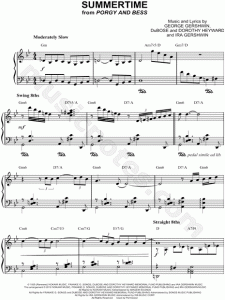This month I have decided to write a recording review on Everyday Robots (2014), an album (and song) by Damon Albarn which questions the role of technology in our everyday lives. Albarn has been part of the music scene since the early 90s. Starting with his Brit-pop band, Blur, which became very successful with each new album. This led to the creation of Gorillaz, a collaborative project with artist Jamie Hewlett in 1998. That project is a mixture of soul, rock, R&B, electronic, hip-hop and many other genres. Albarn is also generally a collaborative person, often featuring many other artists and giving their voice a place in his projects. He has fused multiple styles and genres throughout all his projects but has remained very unique through all his transitions. Everyday Robots is special compared to what he has done in previous works. It’s his first solo album, which he considers a very personal work.
Everyday Robots is a beautiful down-tempo album that combines elements of pop, experimental, trip hop and folktronica. It’s a great album for reflection; the instrumental arrangements alone give way to this melancholy feeling. The vocals are never dense or overwhelming. There’s a lot of space given to fully digest everything happening in each track. The first song, “Everyday Robots,” sets the tone for the album. The instrumentation is carefully placed. There is a repeating string sample, which continues throughout, but real strings later fill out the background –heightening emotions alongside the sample. A piano plays chords on each beat, providing a gentle harmonic accompaniment. Albarn also makes use of light percussive sounds like bottles and sticks.
The vocals are approached in an interesting manner – Albarn never forces the lines out, and it feels like he’s talking melodically through most of song instead of singing. Lyrically, the song is very simple yet contemplative. The first line begins with, “We are everyday robots on our phones / in the process of getting home / looking like standing stones / out there on our own.” We can all relate to this experience; the world we live in today allows us to be as connected or disconnected as we like. I think these lyrics depict how cold and lonely that can be when you realize all the people around you who are absorbed into their phones or other technology on a daily basis. Albarn is trying to get at the root of human connection and how our access to technology has perhaps changed that; maybe increased access to each other via technology has in turn made us feel more alone rather than better connected.
Another important song on the album is “Lonely Press Play.” Many people who listen to music also use it to cope with loneliness and depression. Albarn says quite a lot with this single line, “When I’m lonely, I press play.” It’s a message about how easy we can distract ourselves from life with entertainment. These days it’s easier than ever to step out of (or into) our heads and all the unresolved feelings and emotions we have. Technology has afforded us the ability to check out of life. The instrumentation accompanies the lyrics in a very sympathetic way. The piano plays chords lightly starting on beat two at the beginning of its phrase, while guitar plays double stops in its own repeating pattern over the song. There are also strings weaving in and out of the mix, playing staccato then sustaining with a crescendo.
The tone of this entire album is all about our interaction with our emotions and how technology impacts what we do about them. Negative feelings are unavoidable, but blocking them out with all these forms of entertainment can be dangerous. As I stated before this album is an entirely different approach compared to other projects he’s done and is still working on. With that said, this album is beautiful in so many ways. It’s a well needed friend when you’re feeling unresolved.
P.S. Gorillaz is coming out with their new album Humanz on April 28th!


